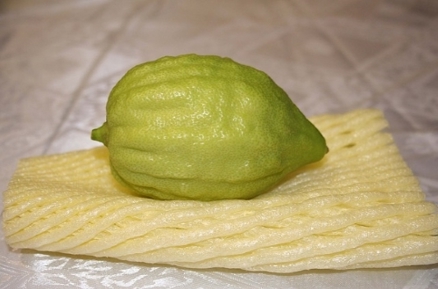Practical information for Sukkot 5782

Actions permitted during the shemitah year when building a sukkah and using the arba minim
For the short PDF file click here.
Building a sukkah
- It is permissible to cut branches that hang over the sukkah.
- It is permissible to remove a roof or shade to put up sechach, even if there are planters underneath.[1]
- Planters sitting on a porch meant for a sukkah may be brought inside the home. After Sukkot it is possible to take them out to the porch again.[2]
Arba minim
A. Pruning palm trees for sechach, lulavim, aravot, and hadasim
- People interested in pruning palm trees for sechach, hadasim, or aravot for the arba minim are generally not experts in professional pruning to encourage growth. For this reason, they can prune palm trees for sechach and hadasim and aravot for the arba minim in a regular way.[3]
- Professional gardeners who are experts and know how to prune in a way that is beneficial to the tree should prune in a way that it is obvious that the action is not for encouraging growth, such as not trimming too close to the trunk (leaving at least 20 cm of the branch) or pruning only one side of the tree or bush
B. Kedushat shevi'it for arba minim
- Etrog: Usually etrogim sold for 5782 developed and were harvested before shemitah and do not have kedushat shevi'it. However, an etrog that developed before shemitah and was harvested after Rosh Hashanah of the shemitah year has kedushat shevi'it owing to doubt.[4] For this reason, these etrogim should be handled as having kedushat shevi'it—they may be used in the regular fashion and may not be directly damaged or destroyed. Yet, one should also separate terumot and ma'aserot without a blessing.[5] In light of the above, etrogim are not ownerless and one may not take an etrog without the owner's permission,[6] and owners may harvest them in the usual fashion as they do every year.[7]
- Lulavim,[8] hadasim,[9] and aravot[10] do not have kedushat shevi'it.
C. Placing hadasim and aravot in water
It is possible to place hadasim and aravot in a bucket of water inside the home to keep them fresh during Sukkot.[11]
D. Hanging etrogim as sukkah decorations
Again, etrogim harvested after Rosh Hashanah 5782 have kedushat shevi'it and it is permissible to hang them as a decoration.[12] Those interested in hanging etrogim in the sukkah should say "I will not abstain from this produce all eight days of Sukkot and Shemini Atzeret." This statement makes it halachically possible to use the etrog at any time, yom tov included.
[1] See Minchat Shlomo I §41:3; Har Tzvi, OC I §211, ibid., 133.
[2] Rabbi Shlomo Zalman Auerbach: Minchat Shlomo I §41:3, Shulchan Shlomo, Hilchot Shevi'it p. 89.
[3] Sefer Hashemitah, p. 10; Orchot Rabeinu, II p. 333 §49, citing the Chazon Ish.
[4] See Rosh Hashanah 14a–15a. The posekim are divided whether the beginning of the fruit's formation (chanatah) or harvest is what determines the etrog's shemitah status.
[5] Rambam, Hilchot Shemitah 4:12; Ma'aser Sheni 1:5–6; Shulchan Aruch YD 331:126; Chazon Ish, Shevi'it §7:10; §21:16; Katif Shevi'it (5782 ed.), p. 119 §11.
[6] Chazon Ish, Shevi'it, 7:14. See also: Derech Emunah, Hilchot Shemitah chap. 4, 12:89.
[7] Rabbi Shlomo Zalman Auerbach, Shulchan Shlomo, p. 235.
[8] Sukkah 39b; Or Same'ach, Hilchot Parah Adumah 11:7; Sefer Hashemitah, chap. 8, p. 41; Cheshev Ha'efod II 121; Minchat Yitzchak VI §1, ibid., VIII §100; Minchat Shlomo I §51:23; Shevet HaLevy I §181; Orchot Rabeinu, II p. 326.
[9] Sukkah 40a; Hilchot Shevi'it, Kuntres daled minim 1:9. Some are machmir for hadasim; see The Consumer's Guide to Shemitah (Torah Veha'aretz publication, 5781), chapter 15 §B, n.7.
[10] Tzitz HaKodesh I §15 in the name of the Maharil Diskin; Sefer Hashemitah, pp. 33 – 34; Kerem Tziyon 13:26; Rabbi Shlomo Zalman Auerbach (Minchat Shlomo I §51:23; Hilchot Shlomo, Mo'adim, p. 196; Shulchan Shlomo, Hilchot Shevi'it p. 231 ); Cheshev Ha'Efod II 122; Minchat Yitzchak VI §136; Rabbi Shaul Yisraeli, Katif Shevi'it (5782 ed.), p. 116, n. 14; Mishnat Yosef I §30 and III §22; Ba'ohalei Sadeh §11, pp. 172–173.
[11] Mishnat Yosef III §7:2.
[12] Minchat Yitzchak X §119 (See Minchat Yerushalaim 7:30 that the question was asked by the Rebbe of Belz who had a custom of hanging the etrog and looked for a way to permit it – a heiter); Shevet Halevy VII §57; Lehorot Natan III §36; Orchot Rabeinu II, p. 333 §48; Chut Shani, Hilchot Shemitah 5:7, p. 237.




